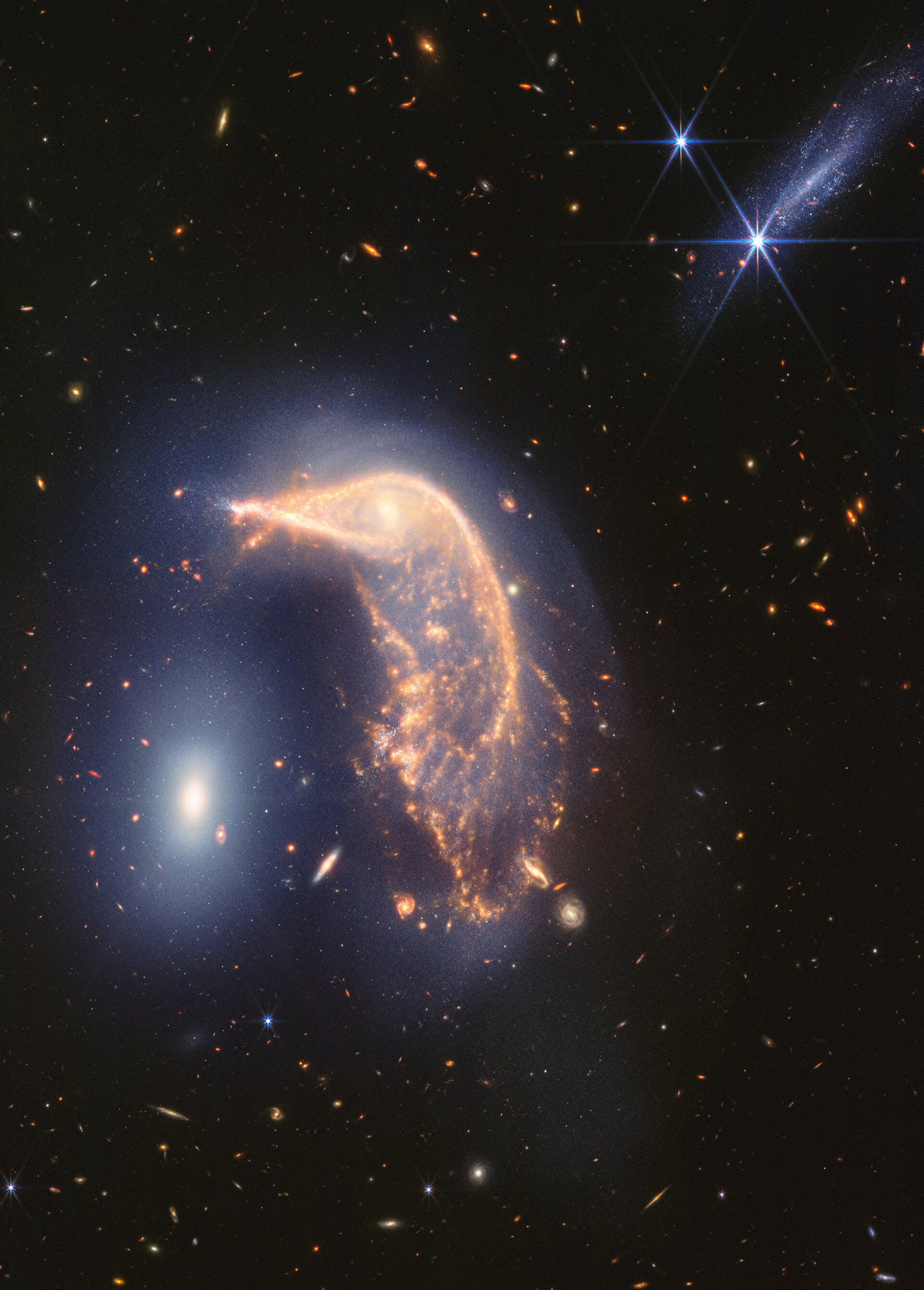Their ongoing interaction was set in motion between 25 and 75 million years ago, when the Penguin (individually catalogued as NGC 2936) and the Egg (NGC 2937) completed their first pass. They will go on to shimmy and sway, completing several additional loops before merging into a single galaxy hundreds of millions of years from now.
The James Webb Space Telescope takes constant observations, including images and highly detailed data known as spectra. Its operations have led to a ‘parade’ of discoveries by astronomers around the world. It has never felt more possible to explore every facet of the Universe.
The telescope’s specialisation in capturing infrared light – which is beyond what our own eyes can detect – shows these galaxies, collectively known as Arp 142, locked in a slow cosmic dance. Webb’s observations (which combine near- and mid-infrared light from Webb’s NIRCam [Near-InfraRed Camera] and MIRI [Mid-Infrared Instrument], respectively) clearly show that they are joined by a blue haze that is a mix of stars and gas, a result of their mingling.
. . .
And here’s a followup video on the James Webb Space Telescope YouTube channel: A Tour of Arp 142


